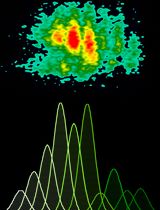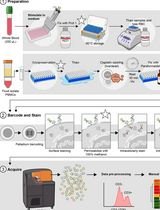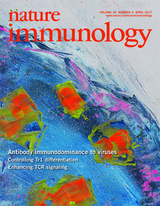- EN - English
- CN - 中文
Detection of Intracellular Reduced (Catalytically Active) SHP-1 and Analyses of Catalytically Inactive SHP-1 after Oxidation by Pervanadate or H2O2
细胞内还原的(具有催化活性的)SHP-1检测以及在经钒酸盐或H2O2氧化后无催化活性SHP-1的分析
发布: 2018年01月05日第8卷第1期 DOI: 10.21769/BioProtoc.2684 浏览次数: 6742
评审: Ivan ZanoniGuadalupe Ortiz-MuñozHenrique Borges da Silva

相关实验方案

使用康可藻红素刺激冷冻保存的猪外周单个核细胞进行增殖检测,并结合FCS ExpressTM 7.18软件分析
Marlene Bravo-Parra [...] Luis G. Giménez-Lirola
2025年06月05日 2103 阅读

用于比较人冷冻保存 PBMC 与全血中 JAK/STAT 信号通路的双磷酸化 CyTOF 流程
Ilyssa E. Ramos [...] James M. Cherry
2025年11月20日 949 阅读
Abstract
Oxidative inactivation of cysteine-dependent Protein Tyrosine Phosphatases (PTPs) by cellular reactive oxygen species (ROS) plays a critical role in regulating signal transduction in multiple cell types. The phosphatase activity of most PTPs depends upon a ‘signature’ cysteine residue within the catalytic domain that is maintained in the de-protonated state at physiological pH rendering it susceptible to ROS-mediated oxidation. Direct and indirect techniques for detection of PTP oxidation have been developed (Karisch and Neel, 2013). To detect catalytically active PTPs, cell lysates are treated with iodoacetyl-polyethylene glycol-biotin (IAP-biotin), which irreversibly binds to reduced (S-) cysteine thiols. Irreversible oxidation of SHP-1 after treatment of cells with pervanadate or H2O2 is detected with antibodies specific for the sulfonic acid (SO3H) form of the conserved active site cysteine of PTPs. In this protocol, we describe a method for the detection of the reduced (S-; active) or irreversibly oxidized (SO3H; inactive) form of the hematopoietic PTP SHP-1 in thymocytes, although this method is applicable to any cysteine-dependent PTP in any cell type.
Keywords: Reactive oxygen species (活性氧种类)Background
Reactive oxygen species (ROS) are generated by cellular NADPH oxidases and mitochondria. Most Protein Tyrosine Phosphatases (PTPs) contain a conserved catalytic cysteine with a low dissociation constant (pKa) that is highly susceptible to oxidation by ROS (Rudyk and Eaton, 2014). ROS-inactivation of PTPs plays an important role in regulating tyrosine-kinase-mediated signaling responses in numerous cell types. PTPs are rapidly oxidized in cells treated with the ROS H2O2 or the PTP inhibitor pervanadate (Huyer et al., 1997; Choi et al., 2017). Iodoacetyl-polyethylene glycol-biotin (IAP-biotin) selectively and irreversibly reacts with de-protonated (S-) cysteine thiols (Rudyk and Eaton, 2014). To label basal reduced (active) cellular PTPs, IAP-biotin is added at the time of cell lysis.
PTP active site cysteines can be oxidized by ROS to the sulfenic acid form (-SOH), which can then be converted into either sulfenylamide (-SN-) or cysteine disulfide (S-S) forms. Sulfenic acid, sulfenylamide and disulfide oxidized PTPs can be ‘re-activated’ by treatment with thiol reducing agents such as dithiothreitol (DTT) which convert the catalytic cysteine to the active (SH) state. PTP oxidation can be detected indirectly by a three-step method (irreversible alkylation of reduced active site cysteines with an alkylating agent followed by reduction of reversibly oxidized (SOH) active site cysteines with a reducing agent, then finally labeling of the newly formed cysteine thiols) (Weibrecht et al., 2007). This method for direct detection of reversibly oxidized PTPs is not widely used due to the fact that the sulfenic acid state is labile and transient (Karisch and Neel, 2013). PTP catalytic cysteines can also be progressively irreversibly ‘hyper-oxidized’ to the sulfinic (-SO2H) followed by the sulfonic (-SO3H) forms by higher concentrations of ROS or prolonged exposure to ROS. The availability of monoclonal antibodies specific for the sulfonic acid (-SO3H) form of the conserved active site of PTPs has provided a straightforward way to detect oxidized PTPs following treatment of cells with oxidizing agents (Persson et al., 2004). The susceptibility of PTPs in different cell populations to oxidation can be assessed by treatment of cells with oxidizing agents (varying the concentration of oxidizing agent and/or treatment time) followed by blotting of proteins from cell lysates after separation by SDS-PAGE with anti-oxidized-PTP mAb. Here, we describe methods used to detect either reduced (S-; active) or irreversibly oxidized (SO3H; inactive) SHP-1 in thymocytes.
Materials and Reagents
- Consumables
- Push pins or syringe needles
- Pipette tips (Neptune Scientific, catalog numbers: BT10F , BT100 , BT1250 )
- 14 ml conical tubes (Corning, Falcon®, catalog number: 352059 )
- 1.6 ml microfuge tubes (Neptune Scientific, catalog number: 4445.S.X )
- 3MM paper (GE Healthcare, catalog number: 3030-861 )
- 6-well plate (Nest Biotechnology, catalog number: 703001 )
- Cell strainer, 70 μm (Southern Labware, catalog number: C4070 )
- PVDF membrane (Thermo Fisher Scientific, Thermo ScientificTM, catalog number: 88518 )
- Western blotting film (Next Day Science, catalog number: A8803 )
- Nitrocellulose membrane (GE Healthcare, catalog number: 10600002 )
- Push pins or syringe needles
- Biological reagents
- Female 6-8 week old C57BL/6 mouse (Taconic Biosciences, catalog number: B6NTac )
- Female 6-8 week old C57BL/6 mouse (Taconic Biosciences, catalog number: B6NTac )
- Chemical reagents
- Trypan blue solution, 0.4% (Thermo Fisher Scientific, GibcoTM, catalog number: 15250061 )
- Serum-free medium (Corning, Mediatech, catalog number: 40-101-CV )
- Methanol (Sigma-Aldrich, catalog number: 32213 )
- 1 M HEPES pH 7.0 (Sigma-Aldrich, catalog number: H0887 )
- 1 M Tris-HCl pH 7.5 (Quality Biological, catalog number: 351-006-101 )
- 5 M NaCl (Quality Biological, catalog number: 351-036-101 )
- 10% SDS (Quality Biological, catalog number: 351-032-101 )
- Sodium deoxycholate (Sigma-Aldrich, catalog number: D6750 )
- Nonidet P40 (Sigma-Aldrich, Roche Diagnostics, catalog number: 11754599001 )
- Triton X-100 (Sigma-Aldrich, catalog number: T8787 )
- Sodium fluoride (NaF) (Sigma-Aldrich, catalog number: S7920 )
- Phenylmethanesulfonyl fluoride (PMSF) (Sigma-Aldrich, catalog number: P7626 )
- Iodoacetyl PEG-biotin (Thermo Fisher Scientific, Thermo ScientificTM, catalog number: 21334 )
- Diethylenetriaminepentaacetic acid (DTPA) (Sigma-Aldrich, catalog number: D6518 )
- Catalase (Sigma-Aldrich, catalog number: C30 )
- Protease inhibitor tablets (Roche Diagnostics, catalog number: 5056489001 )
- Anti-Oxidized PTP active site mAb (R&D Systems, catalog number: MAB2844 )
- Anti-SHP-1 antibody (Santa Cruz Biotechnology, catalog number: sc-287 )
- Goat anti-mouse IgG HRP (Santa Cruz Biotechnology, catalog number: sc-2302 )
- Mouse anti-rabbit IgG HRP (Santa Cruz Biotechnology, catalog number: sc-2357 )
- GammaBind G Sepharose (GE Healthcare, catalog number: 17088501 )
- SDS protein gel loading solution (Quality Biological, catalog number: 351-082-661 )
- 2-Mercaptoethanol (Sigma-Aldrich, catalog number: M3148 )
- Tris-glycine transfer buffer (25x) (Thermo Fisher Scientific, InvitrogenTM, catalog number: LC3675 )
- Tris-glycine SDS running buffer (10x) (Thermo Fisher Scientific, InvitrogenTM, catalog number: LC2675 )
- NovexTM Wedge well 10% Tris-glycine gel (Thermo Fisher Scientific, InvitrogenTM, catalog number: XP00100 )
- Non-fat dry milk (Santa Cruz Biotechnology, catalog number: sc-2325 )
- Streptavidin-HRP (GE Healthcare, catalog number: RPN1231-2ML )
- SuperSignalTM West Pico chemiluminescent substrate (Thermo Fisher Scientific, catalog number: 34080 )
- Tween 20 (Sigma-Aldrich, catalog number: P7949 )
- EGTA (Sigma-Aldrich, catalog number: 03777 )
- β-Glycerophosphate (Sigma-Aldrich, catalog number: G6501 )
- N-Ethylmaleimide (Sigma-Aldrich, catalog number: E3876 )
- H2O2 (3%) (Sigma-Aldrich, catalog number: 88597 )
- Sodium orthovanadate (Na3VO4) (Sigma-Aldrich, catalog number: 450243 )
- Iodoacetamide (Sigma-Aldrich, catalog number: I1149 )
- Oxidation lysis buffer (see Recipe 1)
- Oxidation wash buffer (see Recipe 2)
- TBST buffer (see Recipe 3)
- 1 mM pervanadate (see Recipe 4)
- Lysis buffer (see Recipe 5)
- Trypan blue solution, 0.4% (Thermo Fisher Scientific, GibcoTM, catalog number: 15250061 )
Equipment
- VANTAGE Strabismus Scissors (Steeles, model: V95-312 )
- Forceps (Polysciences, model: 5 Dumont INOX )
- Pipettes (Gilson, models: P10, P100, P1000; catalog numbers: F144802 , F123615 , F123602 )
- Clay Adams Nutator mixer (BD, model: 421105 )
- Mini tank transfer unit (GE Healthcare, catalog number: TE22 )
- X cell SureLockTM mini-cell (Thermo Fisher Scientific, InvitrogenTM, catalog number: EI0001 )
- Hemocytometer (Daigger Scientific, catalog number: EF16034F )
- CO2 incubator (Thermo Fisher Scientific, model: HeracellTM 150 )
- Platform shaker (Heidolph, model: Unimax 1010 , catalog number: 036130180)
- Centrifuge (Eppendorf, model: 5418 , catalog number: 5401000137)
- Chemical resistant vacuum pump (Southern Labware, model: Model 400 )
- Table top centrifuge for 14 ml tubes (Thermo Fisher Scientific, model: SorvallTM LegendTM XTR )
- Film developer (Kodak, model: KODAK X-OMAT 2000 Processor )
Software
- MultiGauge (Fujifilm software)
- GraphPad Prism (GraphPad software)
Procedure
文章信息
版权信息
© 2018 The Authors; exclusive licensee Bio-protocol LLC.
如何引用
Choi, S. and Love, P. E. (2018). Detection of Intracellular Reduced (Catalytically Active) SHP-1 and Analyses of Catalytically Inactive SHP-1 after Oxidation by Pervanadate or H2O2. Bio-protocol 8(1): e2684. DOI: 10.21769/BioProtoc.2684.
分类
免疫学 > 免疫细胞功能 > 综合
生物化学 > 蛋白质 > 活性
细胞生物学 > 细胞信号传导 > 胞内信号传导
您对这篇实验方法有问题吗?
在此处发布您的问题,我们将邀请本文作者来回答。同时,我们会将您的问题发布到Bio-protocol Exchange,以便寻求社区成员的帮助。
提问指南
+ 问题描述
写下详细的问题描述,包括所有有助于他人回答您问题的信息(例如实验过程、条件和相关图像等)。
Share
Bluesky
X
Copy link










